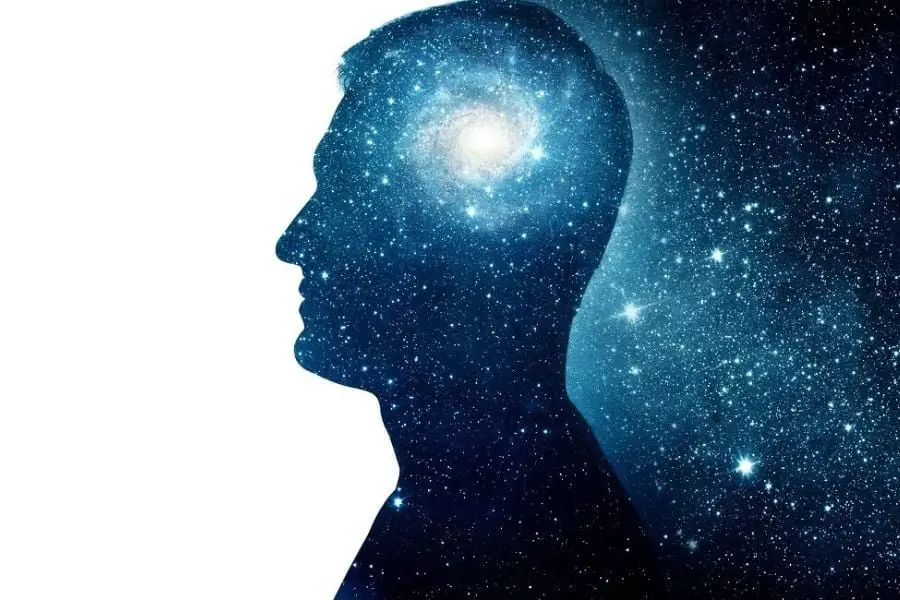For several years, many researchers and philosophers are trying to determine the true concept and reason behind dreams. Yet, we do not have a solid reason as to why do dreams occur while we sleep. But, the road to the answer has given us several interesting theories about dreaming.
Dreaming has fascinated humans for centuries, and while we understand some aspects of it, much remains mysterious. Here are some intriguing theories about dreaming:
What exactly is a dream?

There is no scientific definition of dreams, but dreams can be explained by what we experience. Our minds generate events and visuals, which we call dreams. These events occur while we sleep. These events and visuals vary from being highly amusing to odd at times.
We are most likely to recall or remember the dreams that we see during rapid-eye-movement sleep (REM sleep). It is suggested that we also dream during non-REM sleep, but we do not remember those dreams or are less likely to recall them.
19 Intriguing Theories about Dreaming
1. Freud’s theory

In his work, “The Interpretation of Dreams,” Freud tells us that dreams are “disguised fulfillments of repressed wishes.”
According to Freud’s theory about dreams, the thoughts that we suppress occur in the form of dreams while we sleep. People are often driven by hypersexual tendencies, which are fueled by suppressed and unconscious thoughts and desires.
2. Emotion Regulation Theory

Some researchers propose that dreaming serves a function in regulating emotions. Dreams may provide a safe space for processing and expressing intense or unresolved emotions, allowing individuals to explore and confront difficult feelings in a symbolic or metaphorical context.
According to this theory, REM sleep is crucial for the brain’s emotional modulation. It also explains why several dreams are incredibly intense and why emotional or terrible events tend to repeat.
3. Keeping ourselves prepared

We often come across dreams that contain certain dramatic, dangerous, or threatening scenarios like falling off a cliff, running on an endless road, and showing up for an exam without being prepared, and so on. Some researchers believe that these kinds of dreams prepare us to face the dangers and threats we might encounter in the real world.
According to the threat simulation theory, the sleeping brains focus on the ‘fight-or-flight mechanism’ to prepare us for life-threatening and/or emotionally overwhelming circumstances.
4. Seeing the reflection of our lives

This theory is called the continuity hypothesis, which suggests that dreams reflect a person’s real life. In this theory, researchers suggest that dreams appear as a collage of mental pieces rather than reality.
But, under this hypothesis, the memories we come across in our dreams may be fragmented as a part of including new experiences in life.
5. Dreams give rise to creativity

Thorough research and pieces of evidence have shown that many people get their breakthroughs via their dreams. While dreaming, the mind is not restricted. It wanders limitlessly, which opens the doors to creativity.
In the creativity theory, researchers have shown that dreams give a spur to creativity as the mind remains away from the conscious realities of the world.
6. We dream to forget

This theory is named the reverse learning theory. This theory suggests that dreaming is a part of forgetting. Dreaming is a form of “trimming” those connections in our brains, which have hundreds of synaptic connections between memories. There are just too many to remember them all.
7. Activation-Synthesis Theory

Proposed by J. Allan Hobson and Robert McCarley in 1977, this theory suggests that dreams are the brain’s way of making sense of random neural activity that occurs during REM (rapid eye movement) sleep. According to this theory, the brain constructs stories or narratives to explain these random signals.
During our sleep, we come across various thoughts, images, and narratives in our sleep. When we wake up, we try compiling that information into meaningful information.
8. Lucid Dreaming

Lucid dreams are not ordinary dreams. In these dreams, the person has awareness in their sleep and can also control their dreams. Many types of research have shown that around 50 percent of people around the globe have experienced at least one lucid dream in their life that they could recall. 10 percent of people experience lucid dreaming twice or maybe even more times in a month.
The reason behind why some people lucid dream more than others is still unknown. Experts are still not known as to why lucid dreams occur.
9. Threat Simulation Theory:
This theory posits that dreaming evolved as a way for our ancestors to simulate threatening events and practice their responses to them without actually experiencing the dangers in waking life. This idea suggests that dreams serve an adaptive function by helping us prepare for potential challenges.
10. Memory Consolidation Theory
Dreams may play a role in consolidating and integrating memories. During sleep, especially during REM sleep, the brain processes and stores memories from the day, integrating them with existing knowledge and experiences. Dreams may reflect this process by incorporating elements of recent experiences.
11. Psychoanalytic Theory
Sigmund Freud’s psychoanalytic theory suggests that dreams are expressions of unconscious desires, thoughts, and motivations. Freud believed that dreams provide a window into the unconscious mind and that analyzing dreams can reveal hidden conflicts and desires.
12. Problem-Solving Theory
Some researchers propose that dreaming helps us solve problems and process emotions. Dreams may provide a space for creative thinking and problem-solving, allowing the brain to explore alternative solutions and perspectives.
13. Continual Activation Theory
This theory suggests that dreaming is a continuous process that occurs throughout wakefulness as well as sleep. According to this idea, the brain is constantly generating internal simulations and scenarios, and dreaming represents a more vivid and immersive form of this ongoing mental activity.
14. Neurobiological Theories
Various neurobiological theories explore the neural mechanisms underlying dreaming, including the role of neurotransmitters, brain regions involved in dream generation, and the relationship between dreaming and overall brain activity during sleep.
15. Activation-Information-Mode Model (AIM)
Proposed by Jie Zhang in 2007, this model expands upon the Activation-Synthesis Theory. It suggests that dreams result from the brain’s attempt to interpret and organize information accumulated during waking hours. According to AIM, dreams reflect the brain’s efforts to make sense of and integrate various cognitive and emotional experiences.
16. Social Simulation Theory
This theory suggests that dreaming helps individuals navigate social interactions and understand the thoughts, feelings, and intentions of others. Dreams may simulate social scenarios, allowing the dreamer to practice social skills, empathy, and perspective-taking.
17. Evolutionary Hypotheses
Evolutionary theories of dreaming propose that dreaming has adaptive functions that helped our ancestors survive and reproduce. These hypotheses include ideas such as dream-enhanced threat perception, social bonding through shared dreams, and the rehearsal of skills necessary for survival.
18. Activation-Input-Output Model (AIO)
Building upon earlier theories, the AIO model suggests that dreaming results from a combination of internally generated neural activity (activation), external sensory input, and cognitive processes that organize and interpret sensory information. This model emphasizes the interactive nature of dreaming and its integration with waking experiences.
19. REM Rebound Hypothesis
This hypothesis suggests that when individuals are deprived of REM sleep, they experience a “rebound” effect where REM sleep becomes more intense and frequent once they are allowed to sleep normally again. This phenomenon highlights the importance of REM sleep, including its role in dreaming, for overall brain function and well-being.
These theories offer different perspectives on the function and nature of dreaming, and ongoing research continues to shed light on this complex phenomenon. It’s likely that the true nature of dreaming involves a combination of factors, including neural processes, psychological functions, and evolutionary adaptations.
Dreaming is an intriguing concept that welcomes many theories and interpretations. We might find a solid answer to the question ‘why/how we dream’; maybe we are better off with our definitions.
